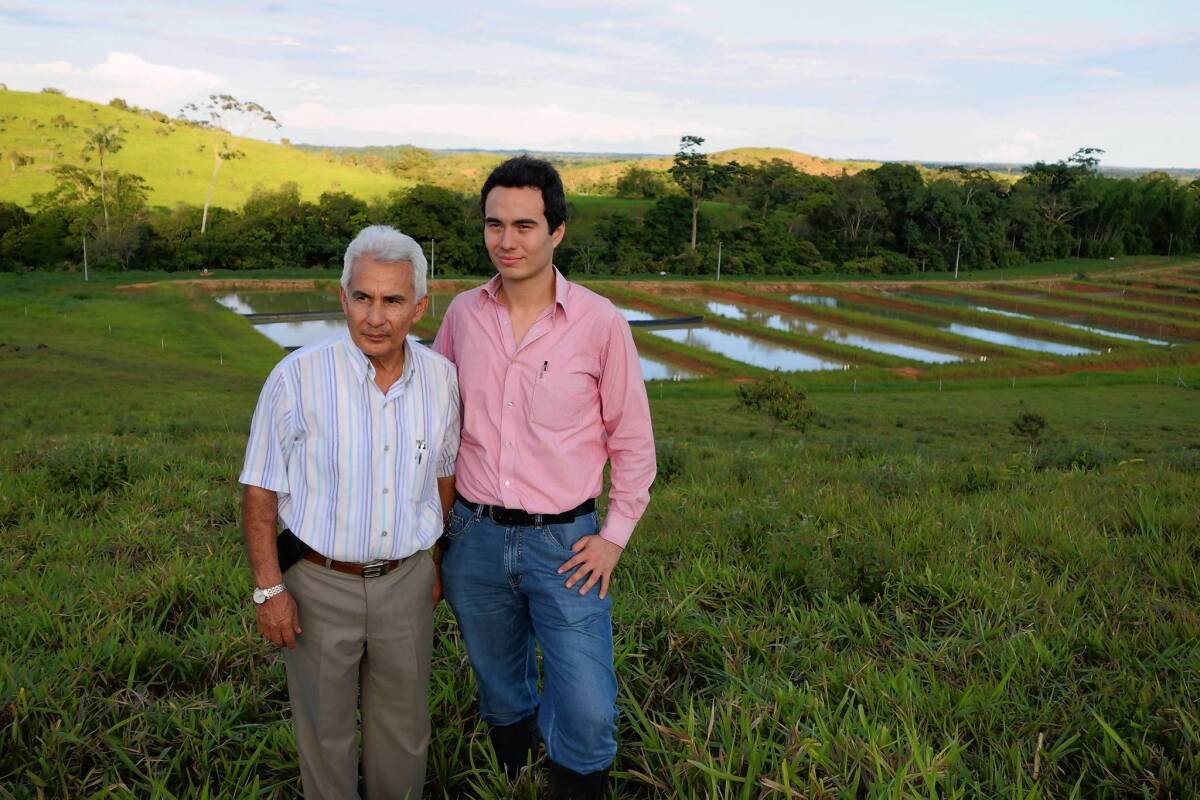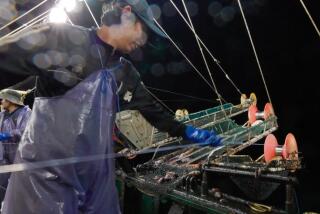In Colombia, turning coca farmers into breeders of ornamental fish

- Share via
FLORENCIA, Colombia — The expansion of China’s middle class isn’t some abstract notion in this sweltering corner of Colombia’s Amazon River basin.
It’s driving a private-public partnership trying to steer the local economy away from illegal coca farming and toward filling Asia’s growing demand for expensive ornamental fish.
Fish farming around Florencia, a city of 165,000 people, is focused on the silver arowana, a highly coveted species called dragonfish in China. Each silver arowana costs pennies to raise but sells at retail for up to $40 in Hong Kong, where collectors view an aquarium filled with nine arowanas as a sign of good luck.
The trailblazer in the emerging ornamental fish industry is a locally owned company called Amazon’s International Trade, or AIT. With support from the Colombian trade promotion office Proexport, AIT has begun ramping up production of fish and this year expects to ship 20,000 arowana minnows to wholesalers in China, Singapore and Japan.
Sales could reach 100,000 “units” by 2015, AIT Vice President Carlos Ramirez said in an interview at the company’s fish farm five miles north of Florencia.
“It just so happens that the climate and the transportation infrastructure in Florencia are optimal for raising and exporting the arowana,” Ramirez said. “And China, from what we hear, is a market that has no limits.”
The business was the brainchild of local entrepreneur and AIT President Alvaro Marles. On a 2008 business trip to China to sell building materials, Marles noticed several businesses kept large aquariums stocked with arowana, which he recognized as native to the Amazon and two other rivers in his region.
But the arowana, which grows to more than a foot long, is a species fast disappearing from the Amazon. The Colombian government has banned capturing the fish five months out of each year.
To get the business going, Marles and several other local investors bought a 1,000-acre parcel of land two years ago, dug 22 breeding pools and stocked them with arowana adults. The company began harvesting fish and shipping them to Asia in temperature-controlled containers last year.
“The Chinese see them as part of their culture,” Marles said. “They call them dragonfish because they resemble mythical dragons that symbolize good luck and protection against evil spirits.”
Wen Xiangfei, a dragonfish hobbyist and website owner in Beijing, said the fish are “like antiques” in that they have been coveted for centuries in China, “especially in the south where traditional beliefs are stronger.” He said that the fish are thought to “attract wealth and ward off demons” and that dragonfish aquariums are a status symbol.
Officials in Colombia’s Caqueta province, of which Florencia is the capital, see a new industry developing. Gov. Victor Isidro Ramirez this year set aside $2.4 million in state funds to subsidize fish farming by 300 families. Many of them are farmers who formerly grew coca, the illicit raw material of cocaine, or citizens displaced by 40 years of armed conflict in Colombia.
The governor said the subsidy came from a special fund generated from the nation’s oil royalties and taxes that is dedicated to promoting sustainable businesses. Five years ago, coca farming and processing was the region’s No. 1 economic activity.
“One of the cornerstones of the government’s policy is to try and take advantage of the incredible biodiversity of our province,” Ramirez, who is not related to Carlos Ramirez, said in a telephone interview.
The governor and others said they were hopeful about new opportunities that may arise from peace negotiations underway in Cuba between Colombia’s largest rebel group, the Revolutionary Armed Forces of Colombia, and government officials.
“We have been working to create a post-conflict economic model for Caqueta,” he said.
The governor said his target is for Caqueta province to export 1 million arowana a year to Asia by 2016. In addition, the 300 fish farming families also will raise arapaima, an Amazon fish measuring up to 6 feet long that Amazon’s International Trade has just begun shipping as food in the domestic market.
Carlos Ramirez, meanwhile, said the company is competing with fish farmers in Indonesia and Malaysia, where he says Colombia’s advantages in low land and labor costs outweigh the Asian suppliers’ proximity to Chinese markets. The company also competes with Peruvian fishermen who have no ban on arowana fishing and Colombian black market traders who violate the government’s restriction on capturing arowana.
For the Colombian government, a successful fish export industry would add to a slowly growing biocommerce initiative that already involves shipments of butterflies to the United States, giant beetles to Japan and tree toads to Germany and other countries.
“The development of a fish export industry in Florencia would be very positive for a country whose economy has been focused too narrowly on traditional exports like coffee, bananas, oil and coal,” said Claudia Sanchez, a fisheries expert with the Agriculture Ministry. “Fish deserve a lot more attention than they get in Colombia.”
Kraul is a special correspondent.
Nicole Liu in The Times’ Beijing bureau contributed to this report.
More to Read
Sign up for Essential California
The most important California stories and recommendations in your inbox every morning.
You may occasionally receive promotional content from the Los Angeles Times.










